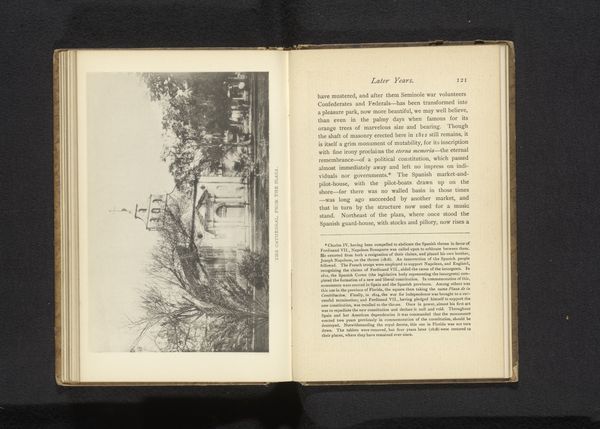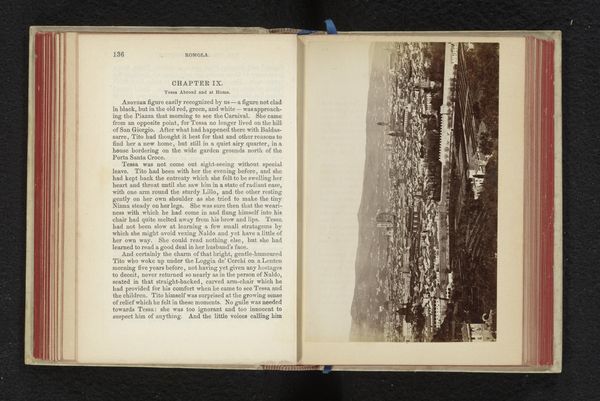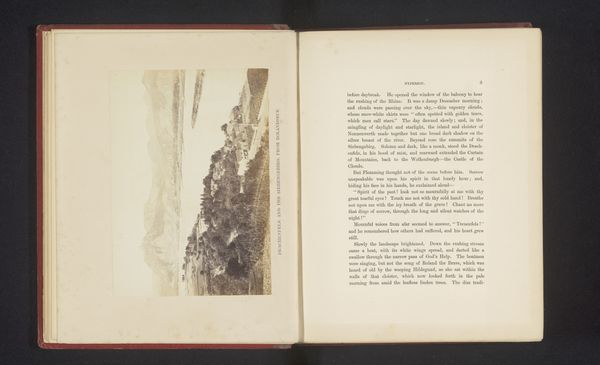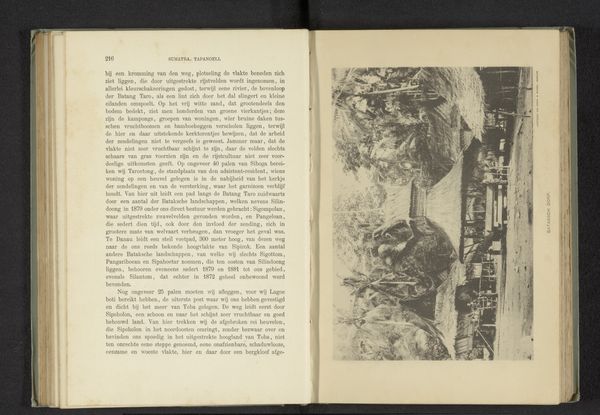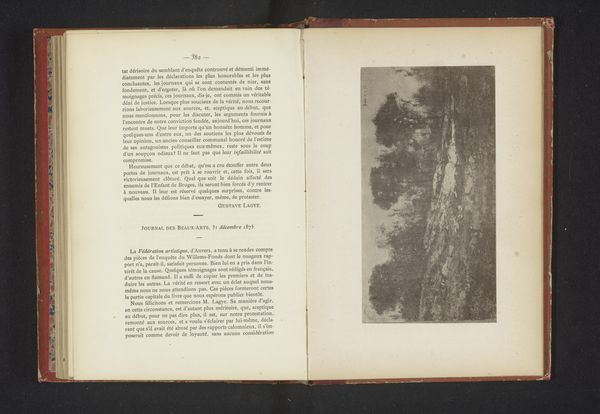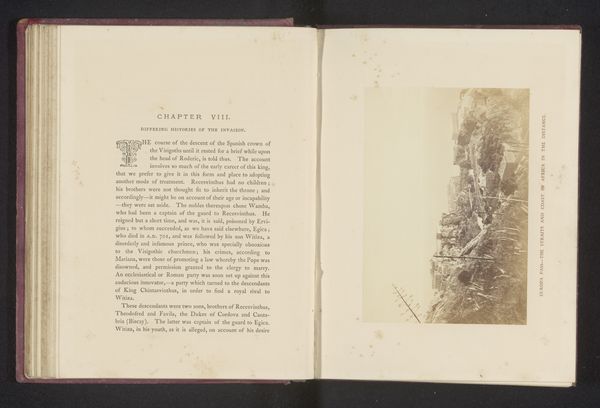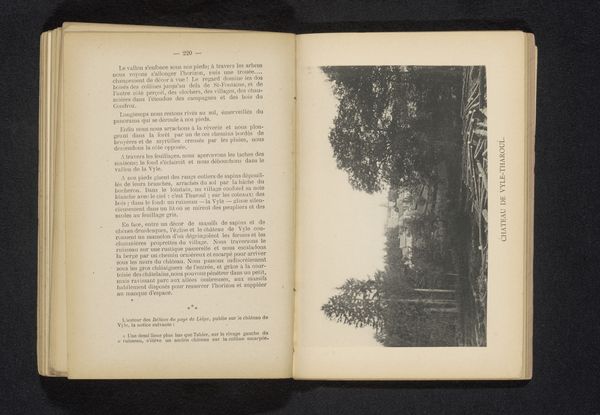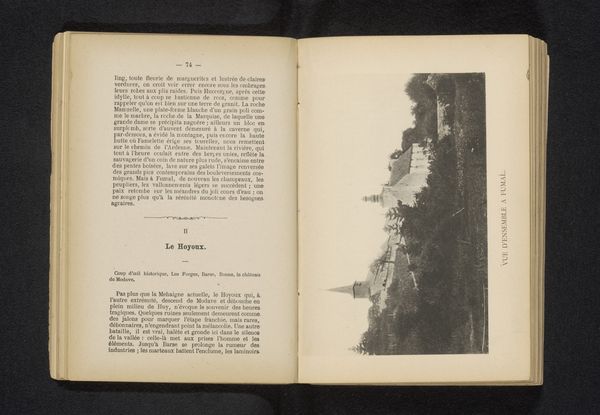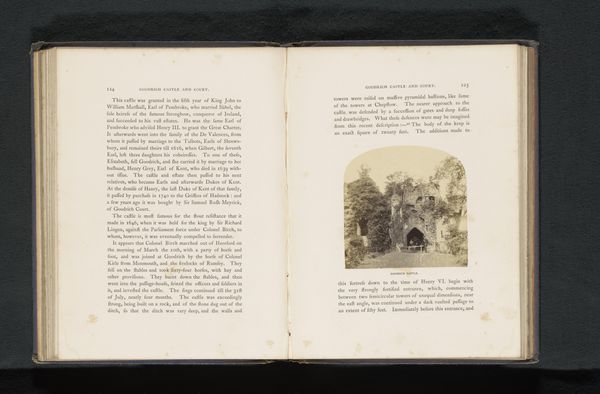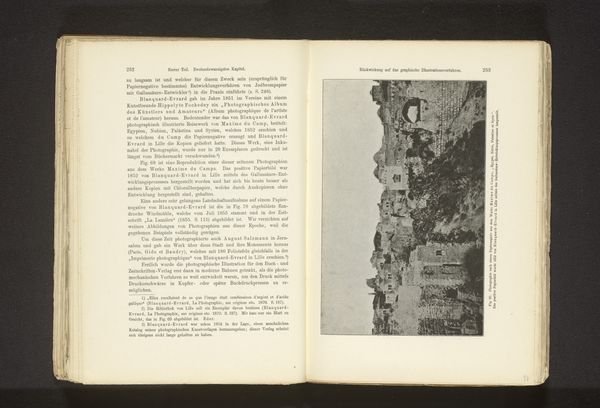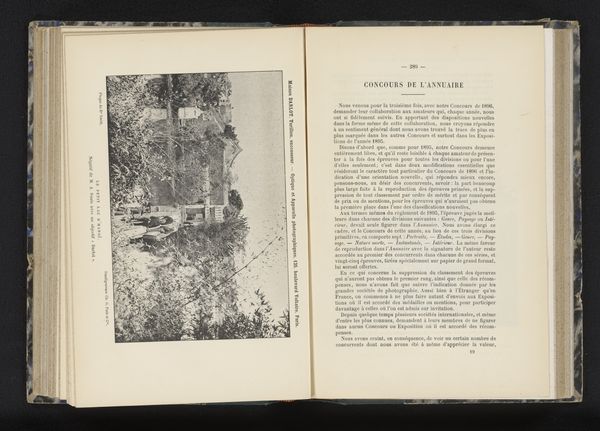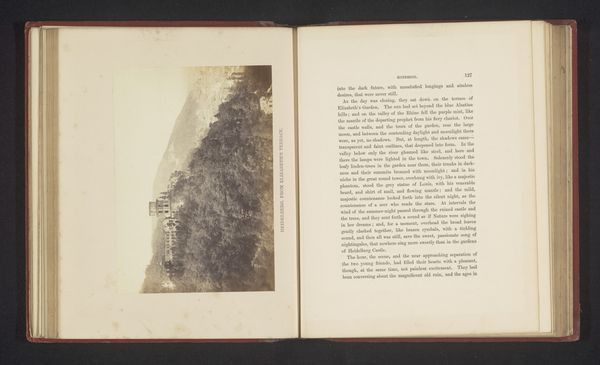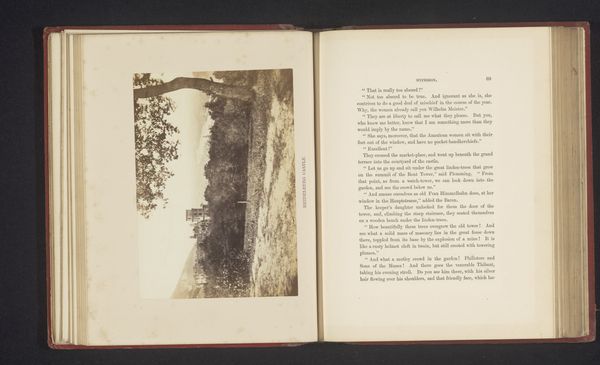
print, photography, albumen-print
#
medieval
# print
#
landscape
#
photography
#
cityscape
#
italian-renaissance
#
albumen-print
Dimensions: height 98 mm, width 136 mm
Copyright: Rijks Museum: Open Domain
Curator: Let's take a closer look at this fascinating albumen print entitled "Gezicht op het klooster la Certosa, nabij Florence" by Giacomo Brogi, dating from before 1863. It's mounted in a book, next to an excerpt from George Eliot’s novel Romola. What are your first thoughts? Editor: Well, immediately, it feels a bit forlorn. The strong contrast between the vegetation above the Charterhouse, and the hard-packed land down the hill makes me question who laboured and built such strong diagonal pathways from the ground up. The severe vertical architecture adds to that somber atmosphere. I notice its scale in relationship to the figures within George Eliot’s passage; did Giacomo intend the readers to feel as small, or connected to such vast institutionalised infrastructure? Curator: Absolutely. The composition really guides the eye upwards along that sloping path to the monastery, which Brogi, I believe, hoped to capture the spiritual ascension, or, the literal process to the afterlife! Editor: Indeed, though for me the appeal rests more in how Brogi employs a technology so utterly modern – early photography, this albumen print – to freeze an idea, or architectural vision from another era! The sharp textures and details provided would've highlighted his ability and technical capabilities; how novel a trade to be capable of, while replicating scenes within well-sought after literature. Curator: A keen point, considering how photography at that time was quickly replacing traditional printmaking! And I find it curious that such careful craftsmanship can also evoke such a raw, almost haunted, atmosphere, as well. Editor: Yes! Perhaps that rawness is tied to the economic system of photography during the late 19th century. Looking at his career, he produced landscape and architectural views to profit from growing European tourist circuits: that gives an idea of the monetary labour going on here that speaks differently from a “simple” pretty Italian landscape. Curator: It certainly makes you wonder about all those unnamed laborers involved in its production and circulation. This little picture holds a lot, doesn't it? Editor: More than initially meets the eye! That's for sure.
Comments
No comments
Be the first to comment and join the conversation on the ultimate creative platform.
